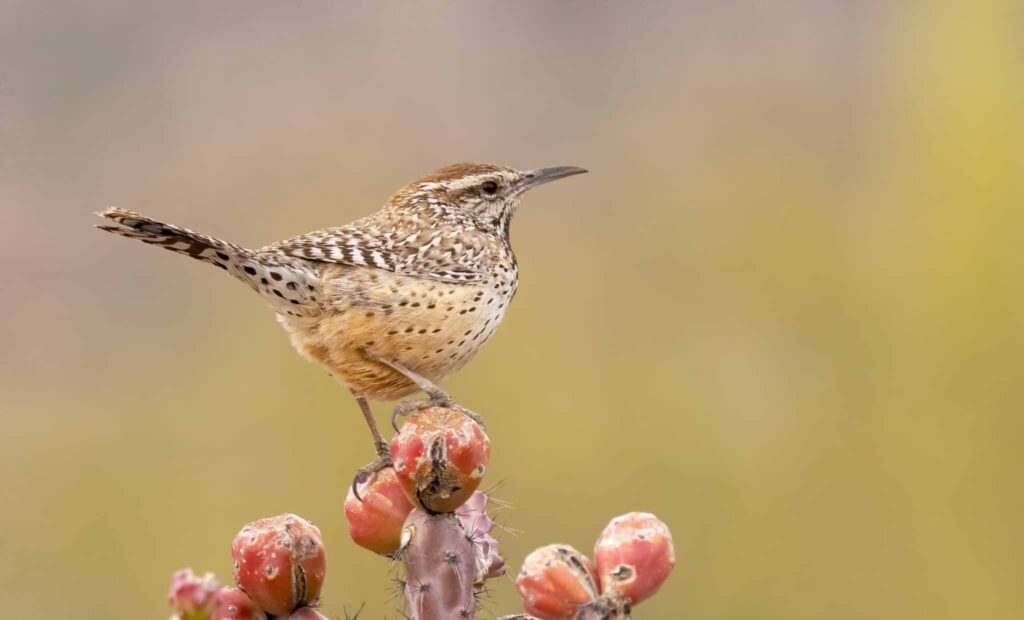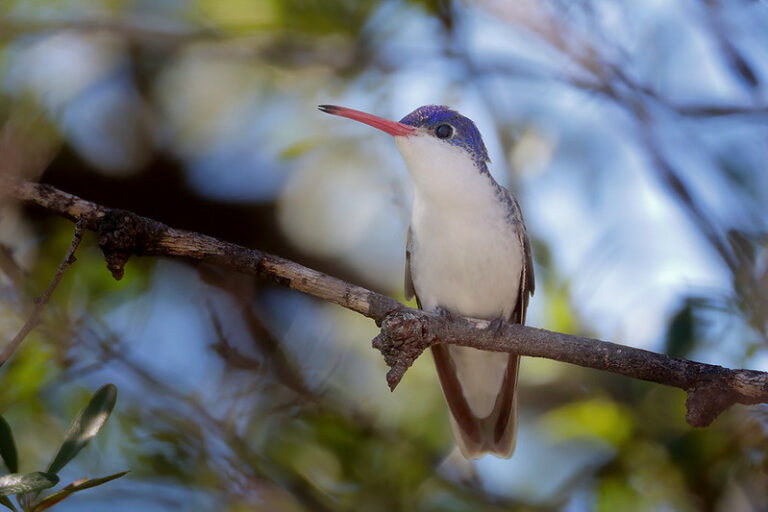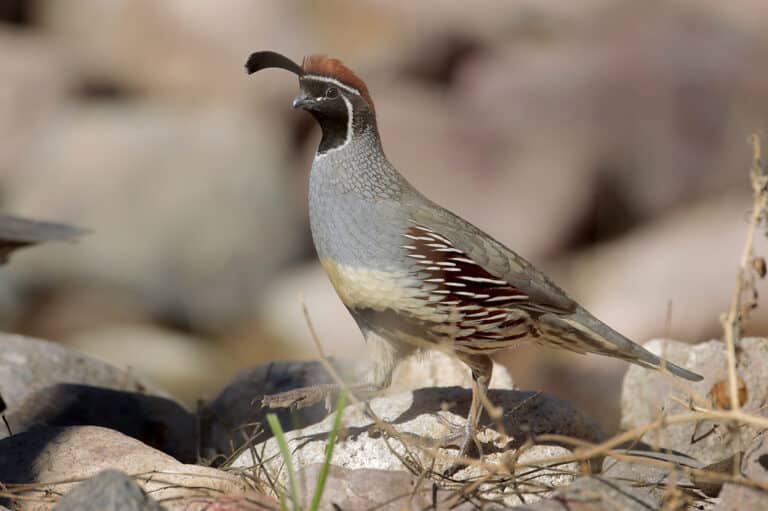I’ve been looking out my front window a lot this week as the busy pair of Cactus Wrens constantly brings food items back to the nest. It’s anyone’s guess right now how many nestlings are in there, but there sure is a racket of cheeping calls every few minutes when the adults return.
The Cactus Wren, (Campylorhynchus brunneicapillus, meaning ‘brown-capped curved bill’) is conspicuous in behavior, size, and plumage—no doubt leading to its being chosen as Arizona’s State Bird. Related to tropical wrens in Mexico, this boldly patterned species is larger and unlike the rest of North America’s wrens. The bird’s spotted and speckled black, white, and cinnamon colored feathers, large white eyebrow, and red iris are hard to miss. Cactus Wrens are noisy and busy, and you’ll probably easily recognize their staccato chug chug chug chug chug “song.”
Cactus Wrens build large football shaped dome nests with a tunnel entrance that leads to the larger living chamber. In Southeast Arizona chain-fruit cholla seems to be the preferred cactus species for building nests. During incubation, males are known to build dummy nests to confuse predators and to roost in at night, sometimes allowing the female to start another brood (up to six per year!).
These adaptations and heavily guarded nests are good protections from predators, especially snakes. So far, I haven’t seen any snakes in my yard for the wrens to worry about. But Cactus Wrens are also known to raid other birds’ nests and destroy eggs—maybe that’s why “my” Curve-billed Thrashers no longer nest here?




